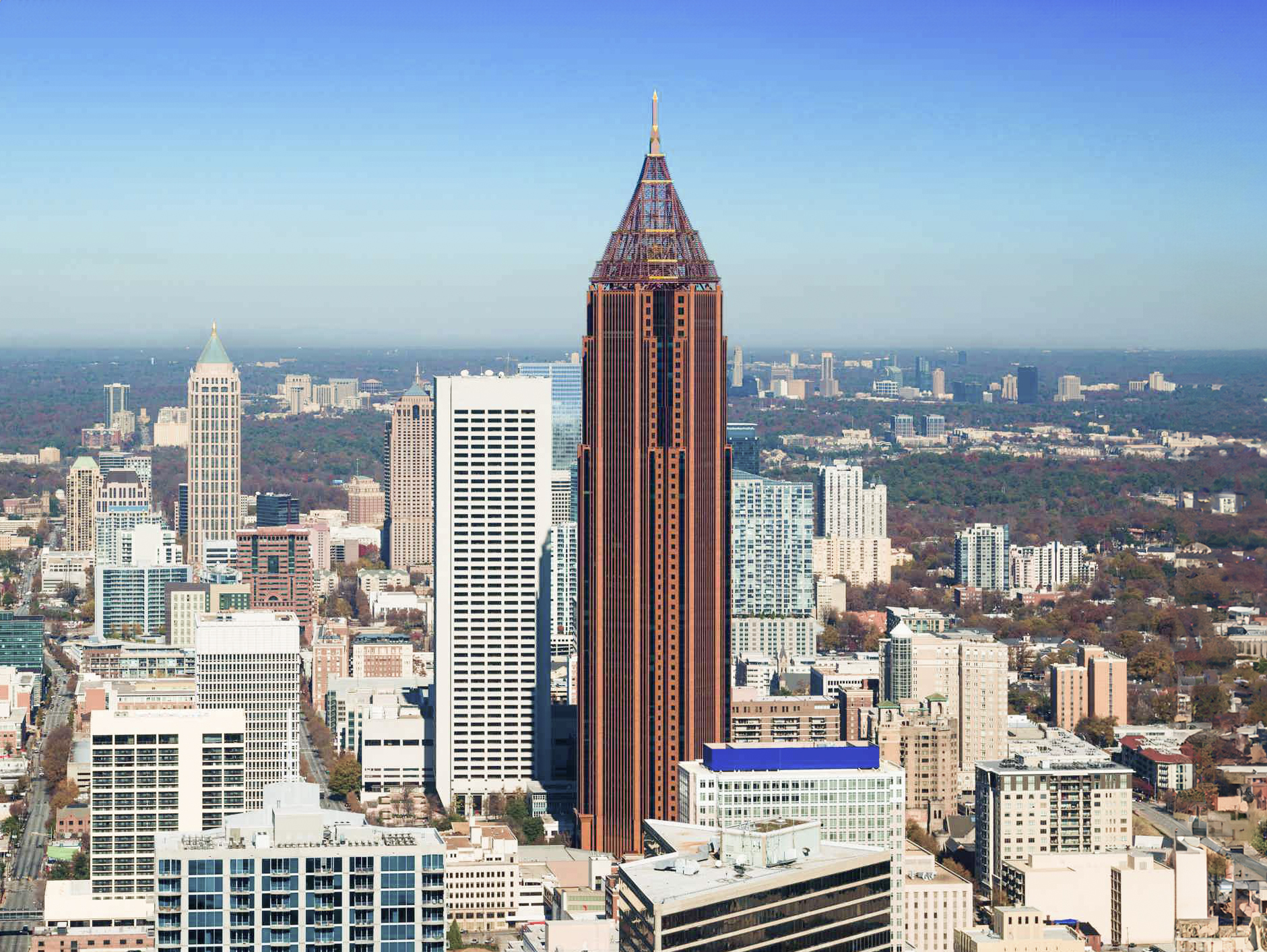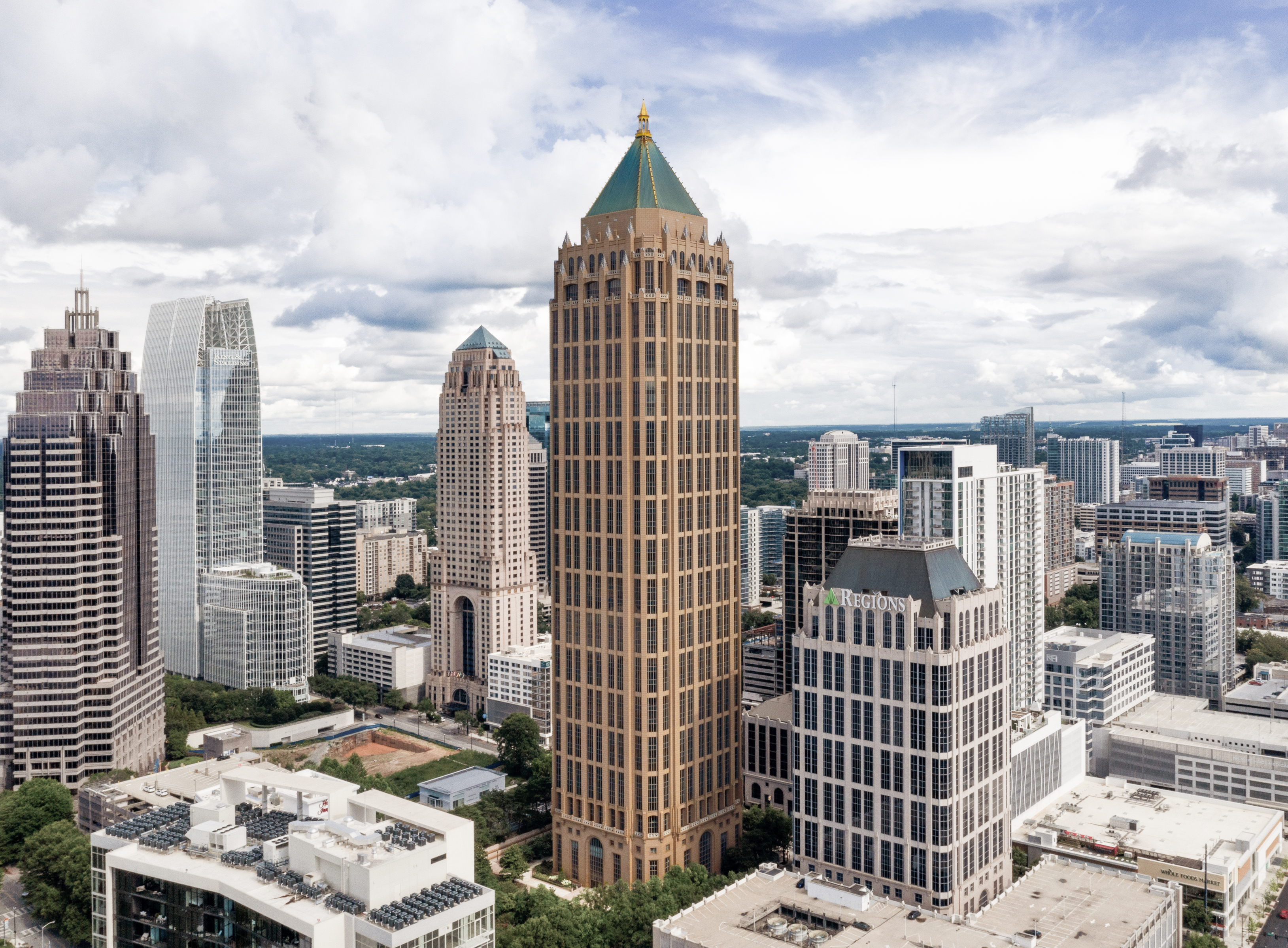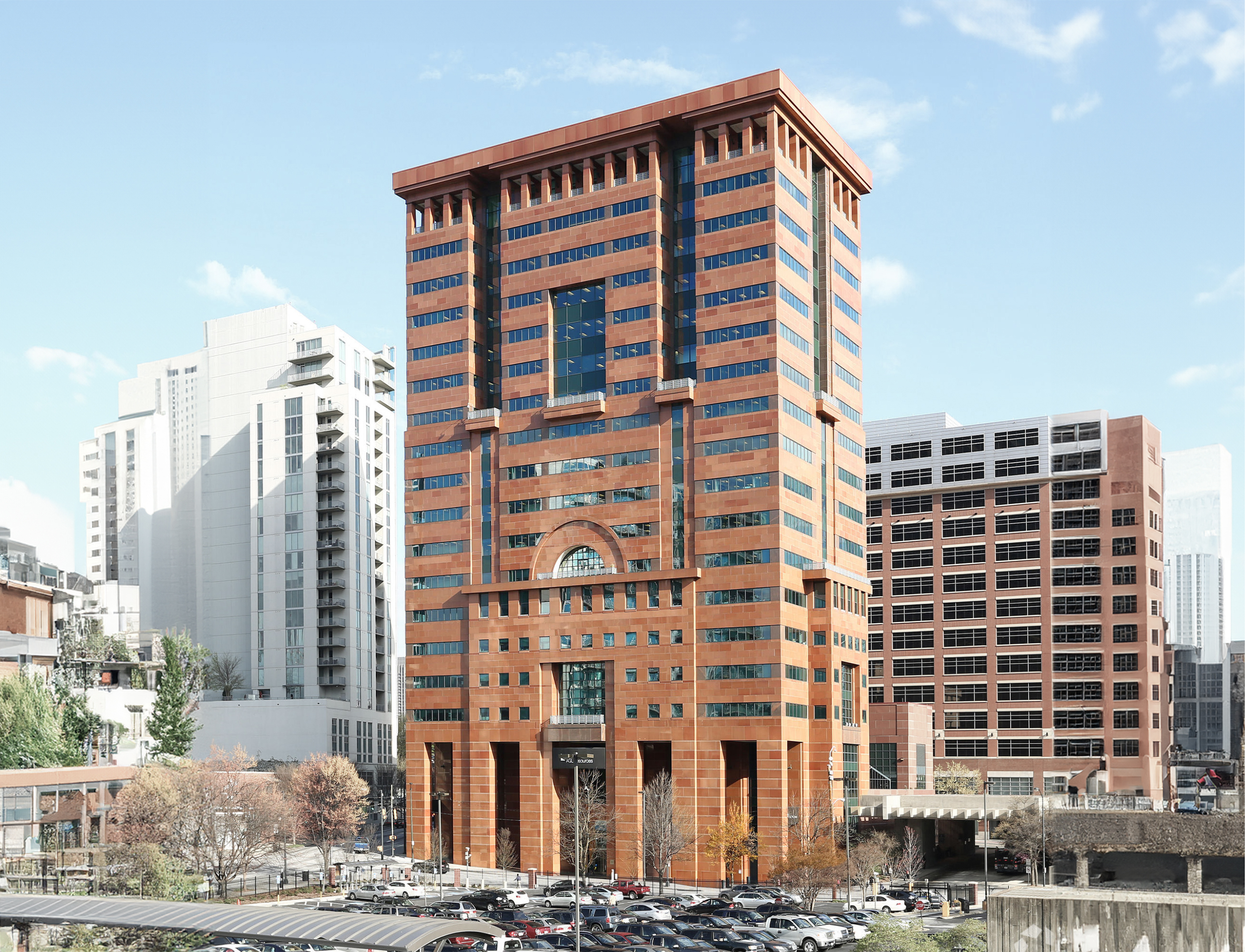The Bank of America Plaza is a Postmodernist skyscraper designed by Kevin Roche, John Dinkeloo and Associates, and built between 1991 and 1992, for a reported $150 million dollars, in Atlanta, GA.
Bank of America Plaza is not the only name you might know this building by though. Between 1992 and 1998 it was also known as NationsBank Plaza C&S Plaza.
Its precise street address is 600 Peachtree Street NE, Atlanta, GA. You can also find it on the map here.
In 2018 the Bank of America Plaza was awarded with the BOMA TOBY Award.
The building has been restored 2 times over the years to ensure its conservation and adaptation to the pass of time. The main restoration works happened in 2016 and 2024.



